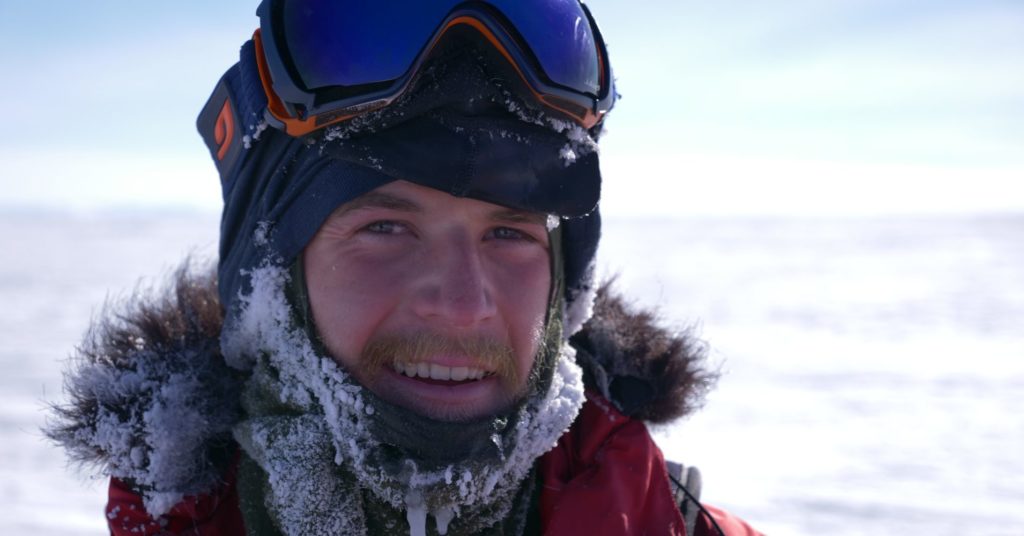
When Barney Swan walked out of a meeting with NASA in 2016, he felt frustrated.
The then-23-year-old and a handful of colleagues had just partaken in a presentation highlighting the destructive impact Antarctica’s collapsing ice shelves are having on the planet.
“It was terrifying, actually terrifying,” Swan said, recalling that meeting during a UN-partnered sustainability conference in in Singapore in January.
“(Antarctica has) 90 percent of the world’s ice, 70 percent of the world’s freshwater is locked within that ice,” he said. “That place has the capacity alone to raise our sea level 20 feet, globally.”
“I walked out of that meeting with NASA feeling almost disabled,” said Swan.
But he didn’t let the experience deter him. Instead, Swan decided to do something about it: He teamed up with his father, Robert Swan — the first man to ski to both the South Pole and the North Pole in the late 1980s — and set out on an epic journey to prove that sustainability can be achieved on a large scale.
A world-first mission
Three years, and much preparation later, the father-son duo, along with two other colleagues, embarked on a 600-mile skiing expedition across Antarctica.
Not only was the journey a grueling personal challenge, it was the world’s first Antarctic expedition to be powered solely by renewable energy. A NASA-designed ice melting system powered by solar energy and biofuels provided water to drink and cook with, while portable solar technology powered their electronics.
The renewable gear added an additional 20 kilograms (about 44 pounds) to the team’s load. But Swan said he wanted to incorporate it to prove that if the technologies can be used under such harsh conditions — as low as minus 55 degrees Celsius (minus 67 degrees Fahrenheit) — they can be easily incorporated into daily life.
“My body started decaying,” said Swan, now 25.
“I’m not showing this to be like, ‘Oh, I’m Bear Grylls, action man,'” said Swan. “I’m showing you that I made a risk to prove a point. I think all of us need to take a little bit more risks — sensible risks, smart risks, but risks for our future’s sake.”
The end is just the start
After three years of planning, the team completed their mission in just 56 days. However, when they reached the South Pole, Swan said he felt a distinct anticlimax, knowing that it was the start of a much longer journey.
“I’m standing there, and I’m like: ‘Great, I’m looking at the shiny object at the bottom of the planet, what’s next?’ Hugely anticlimactic,” said Swan.
He said he realized the next step was to figure out a way for more people to get involved in his mission to combat climate change.
“Everything came back to CO2 — the elephant in the room,” Swan said of the greenhouse gas carbon dioxide.
“You know, you watch a documentary like ‘Before the Flood,’ and I finish that thing, and I’m like, ‘Where is an actual thing that I can do?’ There’s no solutions, follow up. ‘Inconvenient Truth’ is not followed by convenient solutions,” Swan said of Al Gore’s environmental documentary film. “We need convenient solutions, now.”
Setting an achievable goal
With that in mind, in 2017, Swan established the ClimateForce challenge, which aims to clean up 360 million tons of CO2 from the atmosphere before 2025. He aims to do that by providing individuals and businesses with solutions to reduce energy usage and carbon dioxide emissions.
On an individual level, Swan said he believes small steps — like a reduced meat intake and a conscious effort to recycle — can make a difference.
“I love meat, but the sad reality is that that indulgent moment of feeling your taste buds explode, every time you do that, that is at the cost of our planet,” Swan said.
To make a larger scale impact, Swan is also currently working with Climeworks, a green energy development company, to produce infrastructure that filters carbon dioxide out of the air.
Connecting people to the environment is also an important facet of ClimateForce’s initiative, he said.
“We need to have a connection to things or we’re not going to bother protecting it. That’s the sad reality.”
Inspiring others
Swan and his father are now working on leading an expedition team to the Arctic in June so they can witness for themselves the effects of global warming around the North Pole.
Having that authentic, firsthand experience is vital for those who want to support a cause and encourage others to join them, Swan told CNBC Make It.
“I think people like an authentic story, they like people who try and disrupt, and not just doing what is happening right now, they’re doing something that is really different,” Swan said.
However, championing a cause or starting a business is not something to be entered into lightly, he added.
“Really have a very hard, long think about where you want your legacy to be, what business you want to be a part of helping design the future,” Swan said. “Once you start fundraising, you can’t be like, ‘ah, er, um, not sure about this, I’m a bit scared,’ and you give up. You have to really go for it.”
